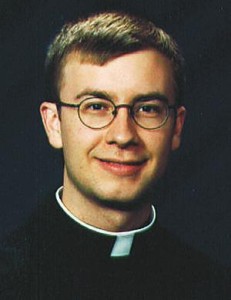By Fr. Thom Hennen

Not infrequently someone will tell me about the success that one or another diocese seems to be having with priestly vocations. I’m never quite sure what to make of this. I think it is worth looking into what other dioceses are doing to promote vocations, but at the same time many questions come to mind.
What is the Catholic population of the diocese? Are the numbers proportionate to the Catholic population and to the needs of the diocese? What are the demographics of the diocese? Where are their seminarians coming from? Are most “homegrown” or are many coming from outside the diocese? If they are coming from somewhere else, why have they sought out this particular diocese? Were they turned down elsewhere and, if so, why? Were they drawn to a diocese because of a particular bishop? What will happen when that bishop retires or is moved? Of the men on their rolls, how many go on to ordination? How do they fare after ordination?
I don’t mean to sound defensive or skeptical, but I think these are some questions that need to be taken into consideration in evaluating the “success” of a vocations program. The insinuation seems to be that there is one thing that this or that diocese has done to achieve near instant success in promoting vocations. But the more I have been exposed to vocations ministry (albeit in my short year as vocations director), the more I have come to realize just how multifaceted it is. My hunch is that dioceses that have been successful in promoting priestly vocations haven’t done just one thing that made all the difference, but that they have done many little things well and usually over a period of years.
So, what might some of those “little things” be? I would suggest a few:
(1) Cultivating good relationships: We live in a time and culture in which young people will typically date for a very long time before getting engaged, and then they will have an engagement sometimes lasting years before actually “tying the knot.” I’m not saying this is necessarily a good thing, but it is reality. In the same way, when it comes to fostering vocations it can take some time. To be a vocation director is a bit like playing “matchmaker,” trying to facilitate a “courtship” (sometimes lengthy) with the priesthood.
Since starting as vocations director last August I have kept a list of prospective seminarians. About 50 names are on the list right now and I would put them on a spectrum of interest ranging from “don’t even know that they are interested yet” to “very interested.” I think a big part of my job is maintaining regular contact and fostering good relationships with these men perhaps over several years before they might actually “take the plunge” of applying.
(2) Being reasonably selective: Last September I attended a workshop for new vocations directors. The priests presenting were seasoned vocations directors, who, after many years in the ministry, had seen great success in their dioceses. They had also made all of the usual mistakes. One piece of advice that they gave us was not to be tempted to “go for the win,” that is, to sign somebody up just for the sake of adding to the ranks.
Rather, they said, “Good men will draw other good men.” So, while it may sound counterintuitive, one of the best ways to grow priestly vocations over time is to be reasonably selective about the men who are admitted. Another experienced vocations director once told me, “Some of the best work you do will be the guys you don’t take.” I’m not saying that we should be overly selective, taking only those men who are already perfectly formed (as though such men existed), but at the same time I think we need to recognize that numbers by themselves don’t measure success.
(3) Praying constantly: Father Corey Close, just ordained June 23, noted in his homily for his Mass of Thanksgiving at St. Mary’s in Iowa City that he attributed his vocation in part to the prayers of the people of the parish. In particular he mentioned a 103-year-old woman who faithfully attends the parish’s monthly Holy Hour for vocations. I firmly believe in the power of the prayers of this woman and others like her. Providing regular opportunities to pray for vocations throughout the parishes of the diocese is, to my mind, another sure way to grow vocations.
And so, while it is certainly interesting to know how other dioceses are doing “numbers-wise,” what is more interesting for me is what is behind those numbers. Do they represent the long faithfulness of forming solid relationships, appropriate selectivity and prayer, or are they just numbers?
(Fr. Hennen is vocations director for the Davenport Diocese. Contact him at (563) 888-4255 or hennen@davenportdiocese.org.)







